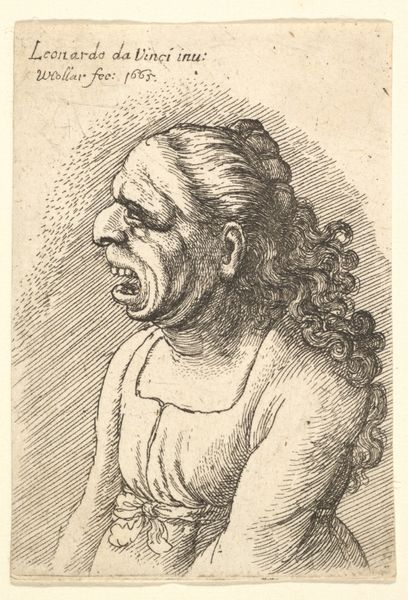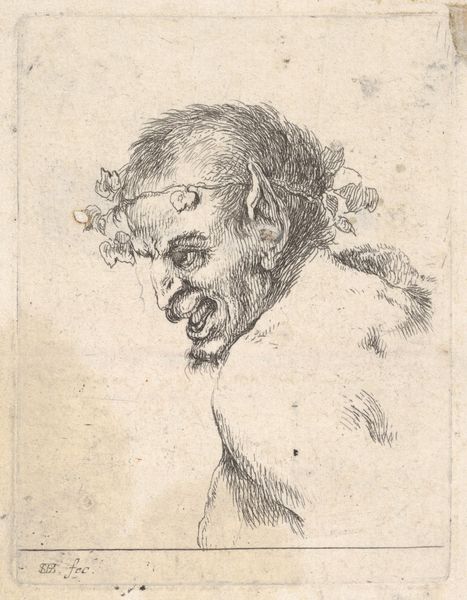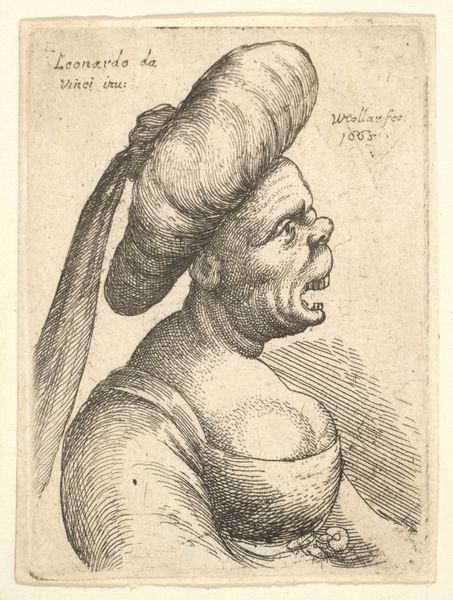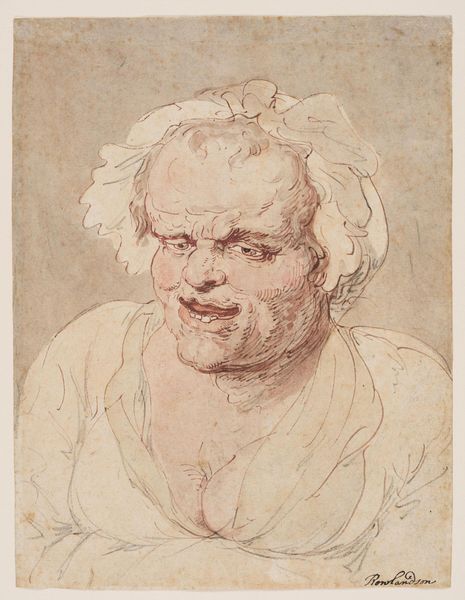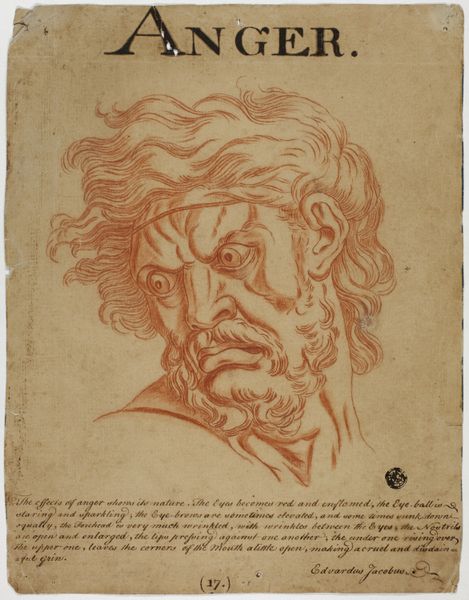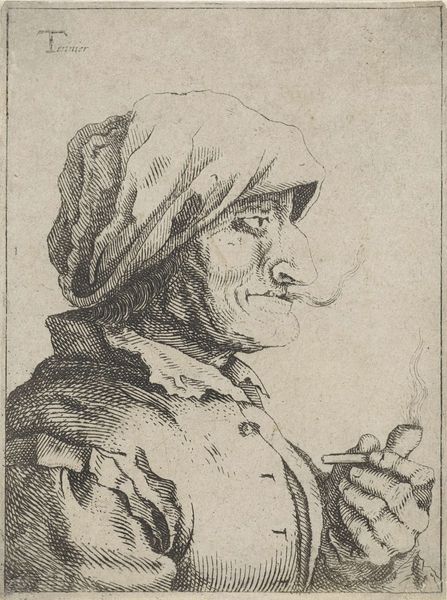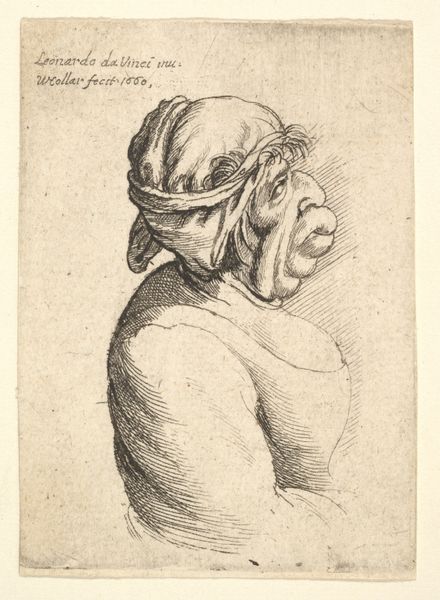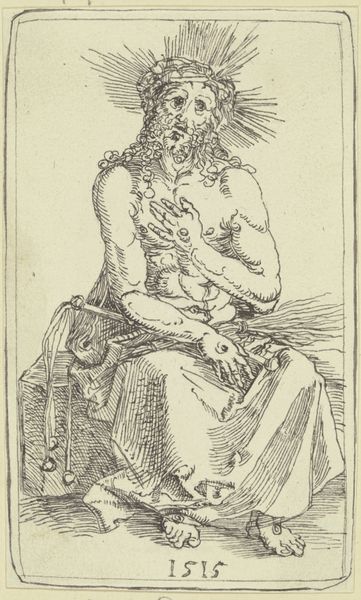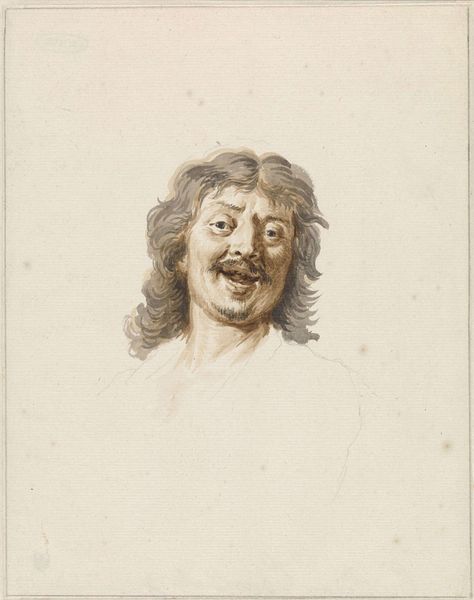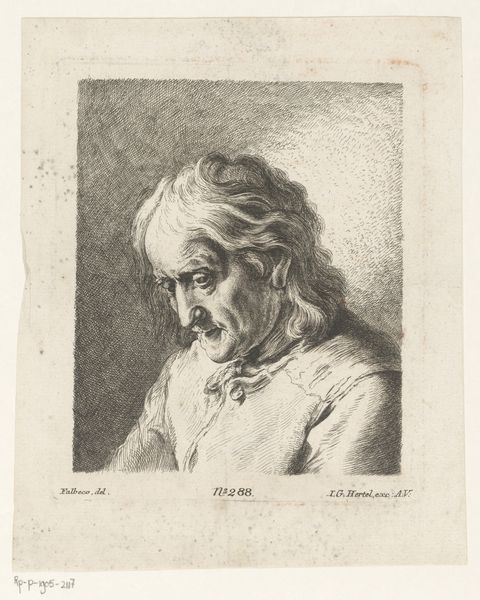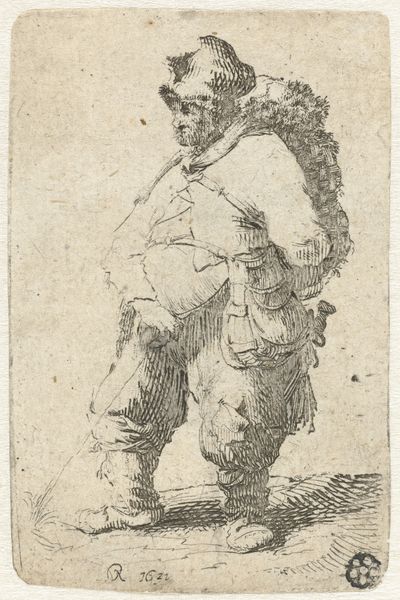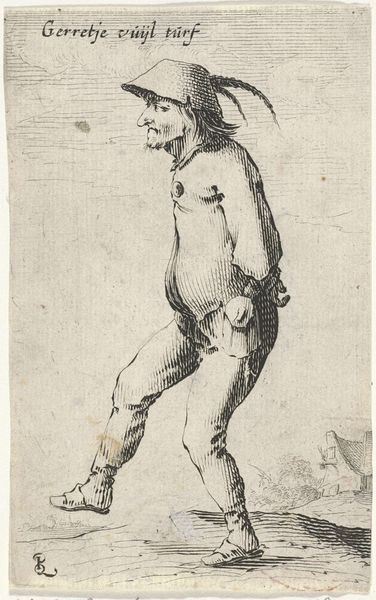
Bust of a woman wearing low-cut dress, with protruding lipd, growth on her forehead, prominent breast, long flowing hair down her back, in profile to left. 1660
0:00
0:00
drawing, print, etching
#
portrait
#
drawing
#
baroque
# print
#
etching
#
portrait drawing
Dimensions: Sheet: 2 1/2 × 1 15/16 in. (6.4 × 4.9 cm)
Copyright: Public Domain
Curator: Let’s turn our attention to this 1660 etching by Wenceslaus Hollar, currently residing at the Metropolitan Museum of Art, titled "Bust of a woman wearing low-cut dress, with protruding lipd, growth on her forehead, prominent breast, long flowing hair down her back, in profile to left." Editor: The initial effect is… arresting. The stark lines of the etching create a portrait that’s almost confrontational. The exaggeration of features pulls you in, yet the effect feels a little cruel. Curator: Indeed. The meticulousness of the etching technique brings a kind of hyper-realism to the subject. Consider the use of line weight to create volume and texture—particularly in the rendering of the hair and the contrast with the flat expanse of the low-cut dress. It's an interesting play with classical ideals within a Baroque framework. Editor: It’s interesting you mention the classical influence, because the materiality suggests something quite different. The work appears to be based on Leonardo da Vinci drawings. It begs the question, why use a reproducible method to explore these kinds of bodies? Was it simply about widespread distribution, perhaps offering a different kind of patronage model beyond a unique, commissioned portrait? How did its production relate to contemporary understandings of beauty and labor? Curator: An important consideration. Hollar’s choice of etching provided accessibility but it also shaped our viewing. The precise, reproducible line allowed for multiple iterations and alterations, fundamentally transforming its aura and meaning, especially compared to, say, a painting. It also raises questions about whose gaze is at play. Editor: The image isn’t flattering and that’s precisely the point. This type of portrait offers a starkly contrasting and perhaps moralizing narrative about female beauty. I’m also intrigued by what that forehead blemish might have meant to 17th century audiences—illness? Social stigma? Curator: It is unsettling and thought provoking. This etching provides a potent insight into 17th century aesthetics and modes of representation. Editor: Absolutely. And it reveals the tension between artistry and utility that defined much of printmaking at the time. Thank you for that intriguing deconstruction.
Comments
No comments
Be the first to comment and join the conversation on the ultimate creative platform.
